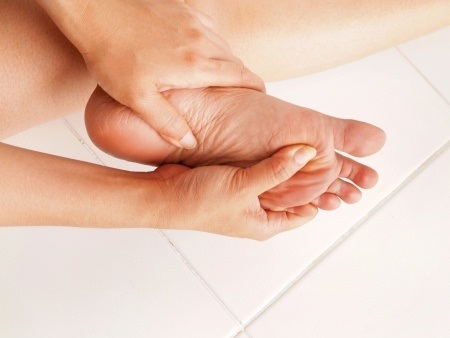Hyperhidrosis and Your Feet
People with hyperhidrosis have sweat glands that activate sooner and remain active for longer periods of time than others. They produce significantly more sweat than what would typically be expected, and they do it more often than people who do not have the condition. Hyperhidrosis can appear anywhere that the body sweats – typically in the armpits, the face and head, or the palms of the hands. When it appears on the feet, it’s known as plantar hyperhidrosis. When the feet are regularly damp and sweaty, other problematic situations can follow, including nail fungus, athlete’s foot, and unpleasant foot odor.
Everyone with hyperhidrosis experiences different triggers, including hot weather, exercise, nervousness, and illness or fever. Shoes and socks made of non-breathable fabrics can also be a factor. To identify your triggers, keep a journal listing the date and time of each episode, along with what you were doing, wearing, eating, etc. This will help you identify certain foods or situations that should be avoided.
What steps can you take to keep your sweaty feet dry and odor-free? Here are five tips from James M. McKee, DPM, FACFAS:
- Practice good hygiene.
- Use foot powder or cornstarch to absorb sweat.
- Try applying deodorant or antiperspirant to your feet.
- Always wear clean, dry socks.
- When possible, choose open shoes such as sandals, and those made of fabrics that allow feet to “breathe.”
What Can the Podiatrist Do About Sweaty Feet?
After examination and proper diagnosis, your podiatrist will have options to treat cases of hyperhidrosis that can’t be managed at home. Among them are:
- Many podiatrists are seeing dramatic results with injections of botulinum toxin A to treat hyperhidrosis. Several Botox injections may be necessary, but the results can last for almost a year.
- Iontophoresis is a procedure in which your feet are immersed in shallow pans of water and a mild electrical current is passed through the skin's surface. It’s painless and there are no significant or serious side effects. Studies have shown the procedure to be effective in an overwhelming majority of patients and the benefits can be long term.
- After you've tried antiperspirants and haven’t responded to treatments like Botox and iontophoresis, your doctor might recommend a prescription medication. These medications can have unpleasant side effects, so they are considered a last resort.
Are you suffering with hyperhidrosis? You’re not alone. Dr. James M. McKee has treated patients just like you for many years and he can help you, too. Call Podiatry Group of Annapolis, P.A. at number or 410-224-4448 today to schedule a convenient appointment in our office in Annapolis, MD on Solomons Island Road.

